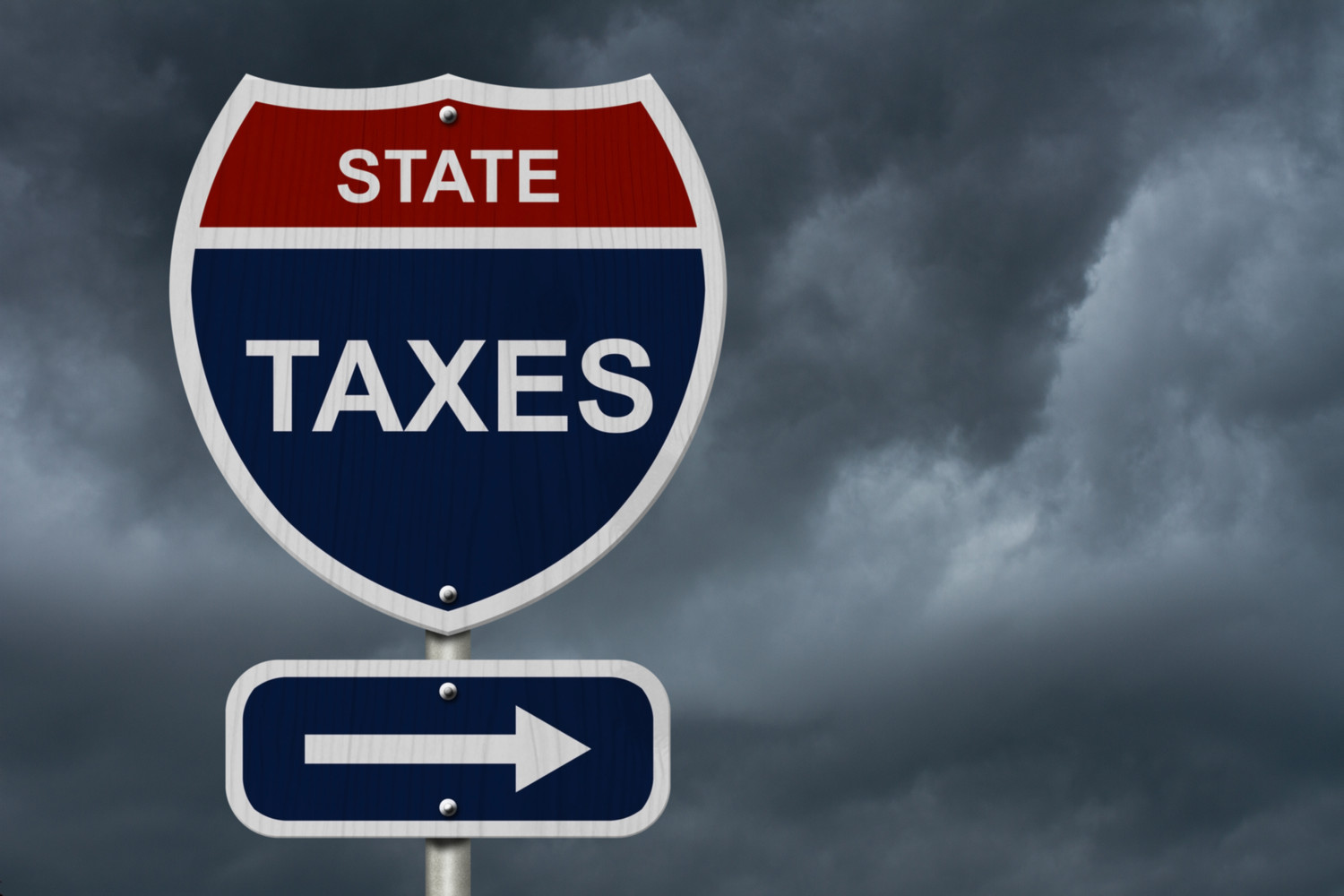State and local taxes, also often referred to as SALT, are one of the most dynamic areas of tax practice, with thousands of jurisdictions across the U.S. imposing increases or newly-created taxes on real or other property.
The SALT professionals at Grant Thornton have compiled it’s top predictions for what it expects to see in the coming year in this volatile space.
1. PTE taxes
States have continued to follow the trend of adopting PTE tax regimes as a workaround to the federal $10,000 SALT deduction limitation adopted under the Tax Cuts and Jobs Act (TCJA), with seven states doing so in 2023. We expect this trend to continue in 2024 in the small number of jurisdictions that have considered the issue but have not yet acted, even though the TCJA’s SALT deduction limitation is currently scheduled to expire at the end of 2025.
We predict that at least two more states will enact elective PTE taxes, despite the looming expiration of the federal SALT cap.
2. Income tax rate fluctuations
States are facing a very uncertain and non-uniform fiscal environment at the moment, affording some, but by no means all, states the ability to reduce state income tax rates. As a result of their strong fiscal positions, some states were able to continue the trend of reducing their income tax rates during 2023. Based on recent trends and fiscal projections, we believe that it is likely that some states will continue to enjoy budget surpluses in 2024 and further reduce their income tax rates.
In contrast, states such as California and New York are projecting substantial budget deficits and will need to find ways to increase their tax collections and/or reduce spending.
We predict that: (i) at least three states will reduce income tax rates or extend income tax rate reductions; while (ii) at least three states will need to increase income tax rates to address budget shortfalls.
3. Digital advertising tax developments
Maryland has generated considerable litigation and garnered significant attention because it was the first state to specifically design and enact a tax on digital advertising services. In 2023, the Maryland Supreme Court vacated a trial court’s ruling striking down the tax, but did not address the merits of the arguments challenging the tax’s validity.
In response to the dismissal of the earlier state lawsuit, Apple Inc. filed an appeal with the Maryland Tax Court arguing that it is due a refund of digital advertising tax paid to Maryland for the 2022 tax year.
We predict that: (i) the Maryland Tax Court will (at least temporarily) invalidate the Maryland digital advertising services tax after considering the substantive merits of the current challenge to such tax; but undeterred, (ii) at least three states will formally propose legislation to tax digital advertising services or data collection services.
4. Conformity to new P.L. 86-272 interpretation
States have begun to adopt the MTC’s revised statement of information interpreting longstanding federal protections from the imposition of state income tax originally developed under P.L. 86-272 to reflect the modern economy and internet business activities. California was the first state to publicly react to the MTC’s new statement by issuing administrative guidance that is consistent with the MTC’s positions. However, a California court recently held that the guidance is void because it constituted a regulation that was not promulgated in compliance with the requirements of the California Administrative Procedure Act.
Other states likely are monitoring the developments in California, but the rulemaking procedures vary by state and the California decision does not necessarily indicate that other states’ P.L. 86-272 guidance is not valid.
We predict that: (i) at least two additional states will adopt the MTC’s revised statement addressing when internet activities exceed P.L. 86-272 protection; and (ii) at least two additional court decisions will determine the extent of state authority to interpret the limitations of P.L. 86-272 protection.
5. Adoption of economic presence nexus standards
California and New York are examples of states that traditionally have used a bright-line economic presence nexus standard for purposes of their income tax.4 In South Dakota v. Wayfair Inc., the U.S. Supreme Court approved the use of a sales tax economic nexus standard that encouraged some states to enact economic nexus standards for income tax purposes. Maine and Massachusetts both enacted income tax nexus standards with $500,000 sales thresholds after Wayfair was decided. Most recently, New Jersey enacted a bright-line economic nexus standard for purposes of the Corporation Business Tax (CBT) for taxable years ending on and after July 31, 2023.
Under this statute, which follows the state’s sales tax nexus standard, a corporation deriving receipts from sources within New Jersey is deemed to have substantial nexus and is subject to the CBT if it either: (i) derives receipts from within New Jersey in excess of $100,000; or (ii) has 200 or more separate transactions delivered to customers in New Jersey. Bright-line nexus standards may provide some clarity regarding whether an out-of-state corporation is subject to income tax, but a low sales threshold may result in additional companies becoming subject to tax.
We predict that at least three additional states will adopt income tax bright-line nexus standards, with at least one state applying a sales threshold below $500,000.
6. Courts / tribunals consider pandemic fact patterns
The requirement that many employees worked remotely from their homes during the COVID-19 pandemic had an impact on the imposition of personal income tax in many jurisdictions. In some instances, employees remotely worked in a state that was different from the state where their office and employer were located. A New York State administrative law judge recently held that a taxpayer employed in New York who worked remotely from his Connecticut residence before and during the pandemic was subject to New York individual income tax under the “convenience of the employer” test. Although employees are no longer required to work from home due to the pandemic, the taxation of remote workers remains relevant because many employees are choosing to work from home.
We predict that at least four courts or administrative tribunals will decide on residency disputes implicated by changes in work and living arrangements caused by the pandemic.
7. Remote seller economic nexus sales tax thresholds
The Wayfair decision upheld South Dakota’s law providing that remote sellers are subject to the state’s sales tax if: (i) the seller’s gross revenue from the sale of tangible personal property, any product transferred electronically, or services delivered into South Dakota exceeds $100,000; or (ii) the seller sold tangible personal property, any product transferred electronically, or services for delivery into South Dakota in 200 or more separate transactions.
After Wayfair, every state with a sales tax eventually enacted some version of an economic nexus statute for remote sellers. While many states to adopt sales tax nexus standards generally followed the South Dakota statute, others eliminated the transactional threshold and/or adjusted the amount of the dollar threshold, including South Dakota itself. The elimination of the transaction threshold provides relief to remote sellers that engage in sales transactions in a state at a relatively low selling price. Given the frequently substantial cost of complying with the sales tax requirements, it may be inequitable to impose this burden on some small sellers.
We predict that at least three more states will enact legislation dropping the transaction threshold from their sales tax economic nexus provisions.
8. Sales tax centralization
Remote sellers have contended that sales tax compliance is particularly difficult in states such as Colorado and Louisiana due to the different sales and use tax administration requirements in numerous local jurisdictions. For example, an Arizona-based online retailer filed a lawsuit in federal court alleging that Louisiana’s decentralized sales tax system presented undue compliance burdens for remote sellers under Wayfair, due to the lack of uniformity in administration between the state sales tax and the local sales taxes administered by the state’s 64 parishes. In 2023, a federal appeals court affirmed the lower court’s dismissal of the lawsuit because it was barred by the federal Tax Injunction Act.
However, Louisiana provided some relief in 2023 by enacting legislation to direct the Louisiana Uniform Sales Tax Board to design and implement a single remittance system for state and local sales and use taxes.
We predict that at least one state will enact legislation to further streamline its sales tax administration and collection process.
9. Expanding the sales tax base
In the past few years due to changes in the composition of goods and services offered by businesses to their customers, many states have acted to expand the indirect tax base to include non-traditional transactions and services. At the same time, states are considering more targeted taxes aimed at industries. For example, due to a stagnation in gasoline tax revenue caused by the greater number of electric and hybrid vehicles and an uncertain oil market, some states are implementing taxes directed at services involving transportation. During 2023, North Carolina enacted an excise tax on gross receipts derived from for-hire ground transportation services.
We predict that: (i) at least two states will act to expand their sales tax bases to include digital goods and services via legislation or regulation; and (ii) at least two states will start taxing transportation services.
10. Unclaimed property legislation
In 2023, the U.S. Supreme Court issued a decision in Delaware v. Pennsylvania holding that teller’s checks and agent checks offered by MoneyGram were similar enough to money orders to be governed by a federal law that directs to which state abandoned money orders and similar written instruments are reported.
Specifically, the Court ruled that MoneyGram’s agent and teller’s checks should be escheated to the states where purchased as directed by the federal statutory rule, instead of to Delaware, the state where MoneyGram is incorporated.
This state involved a long-standing dispute between Delaware and 30 other states over the application of escheat rules to approximately $250 million in uncashed agent checks and teller’s checks issued by MoneyGram. This decision represents a victory for the 30 states, which may now take custody of the abandoned MoneyGram checks and provides additional clarity for issuers of instruments that are substantially similar to the checks reviewed in this case.
In response to the MoneyGram decision, we predict that at least two states will enact unclaimed property legislation reducing escheat exemptions or accelerating reporting requirements through adjustments to dormancy periods.
See the full predictions report at https://www.grantthornton.com/insights/alerts/tax/2024/salt/general/salt-outlook-our-predictions-for-2024.
Thanks for reading CPA Practice Advisor!
Subscribe Already registered? Log In
Need more information? Read the FAQs
Tags: State and Local Taxes




